





One of the joys of gardening is growing flowers for cutting that can be transformed into beautiful arrangements. Foliage, too, can enhance a floral arrangement or stand alone. A bouquet of hosta foliage or other leaves can be just as gorgeous as blooms.
continue reading below
If you only have enough blooms to adorn your outdoor gardens, it may be hard to cut stems for indoor use. Remedy this problem by planting a mixture of perennials and annuals in a cutting garden. This garden is grown specifically to harvest for bouquets, centerpieces, and indoor arrangements.
Plant a cutting garden with an assortment of perennials and annuals with blooms and foliage that can be combined in varied ways. These plants make good cutting garden choices.
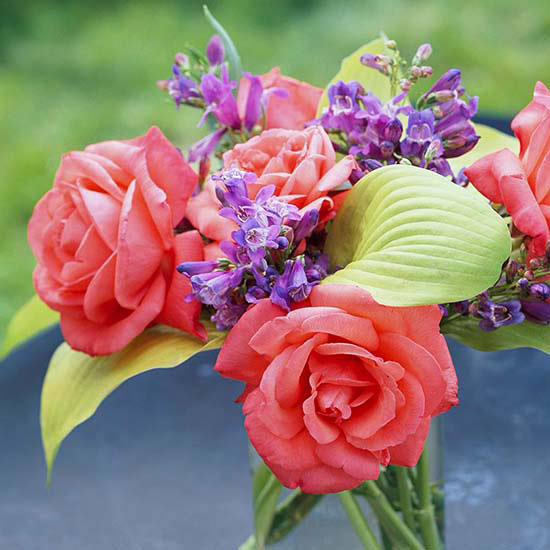
Plan a perennial cutting garden.
Consider these cutting-garden perennials.
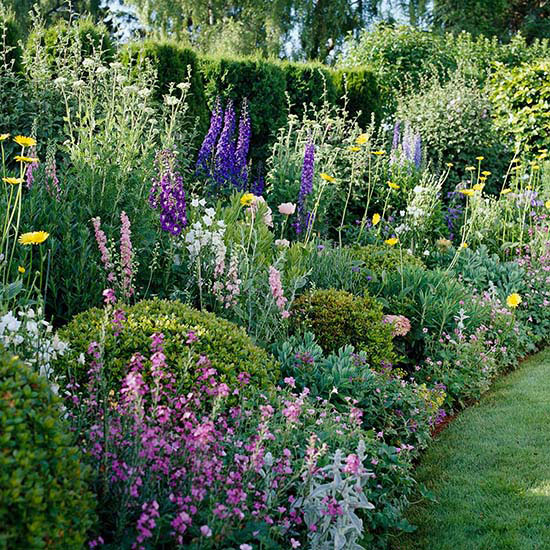
Create a cutting garden of annuals.
Choose annuals for your cutting garden.

Round flowers draw the eye. They're generally placed in a starring role in a bouquet. Many flowers are categorized as round shape even if the individual petals are pointed, including lilies, roses, gerberas, and carnations. Hostas, coralbells, and bergenia all have rounded foliage. In small arrangements, larger versions of smaller leaves, such as ivy, can play the role of round foliage.
Sprays serve as supporting actors in the floral cast. Sprays of flowers, berries, or leaves fill in bare spots and add texture. Consider spray flowers such as baby's breath, spray roses, and Hypericum. Asparagus fern and Pittosporum are classic foliage spray plants.
A traditional arrangement may use all three elements: line, round, and spray. But no rules require you to use all three. You may want a bouquet containing only daisies, for example, which makes its own lovely statement.
Create a single-flower arrangement.
A monochromatic arrangement of several kinds of flowers in a single color creates another pleasing look. Keeping the principles of line, round, and spray elements in mind can help you when selecting flowers.
Flowers picked at different stages of development add depth to the finished arrangement. Use the flowers that are the most fully open in the center and bottom of the arrangement to draw the eye; arrange buds at the top and edges of the design.
Get 10 more flower-arranging tips.
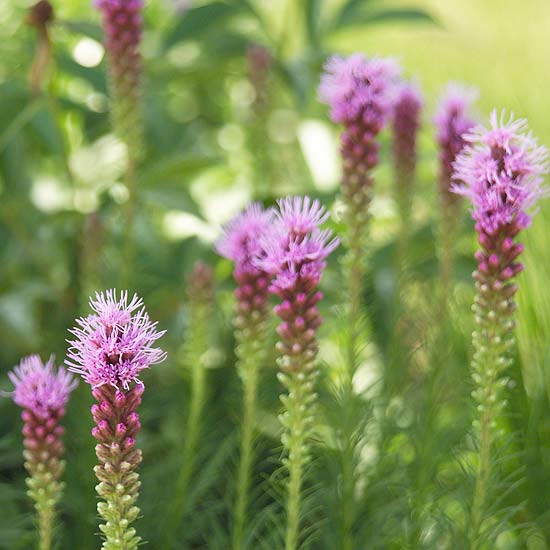
Flower arranging is an art not a science, so don't be afraid to play around with flowers, foliage, vases, twigs, and other materials when creating an arrangement.
The building blocks of your arrangement come from the forms of the flowers or foliage. These forms fit generally into one of three categories: line, round, or spray.
Line foliage or flowers are often the first elements to be placed in an arrangement. Their rigid or gently curving but narrow form creates a framework into which the rest of the elements are inserted. Line plants carry their blooms or leaves along the length of elongated stems. Delphinium, gladiolus, and Liatris are examples of line flowers; eucalyptus, privet, and iris leaves are examples of line foliage.
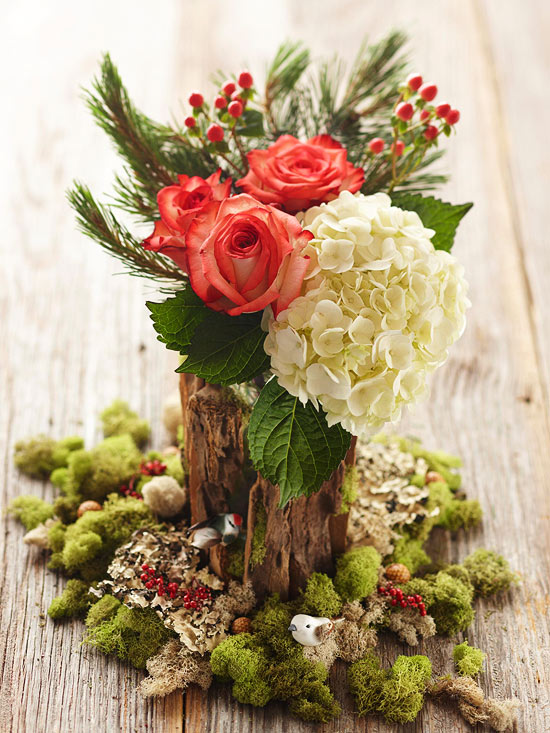
Decide how you want to use your arrangement. If it is going to be a table centerpiece, for example, look for a low container and cut stems short so that the entire arrangement stands no taller than 8 or 9 inches -- low enough for guests to see each other across the table. Or, place the arrangement in a container that is narrow and tall enough so the flowers are above eye level, about 24 inches above the table.
If your arrangement is going to sit on a buffet table with its back to the wall, design the arrangement so the bulk of the flowers face forward. However, angle some of the flower faces so they're not all straight on; it's more interesting if flower heads are not all facing the same direction. Buffet flower arrangements should be tall enough so they don't droop into the food.
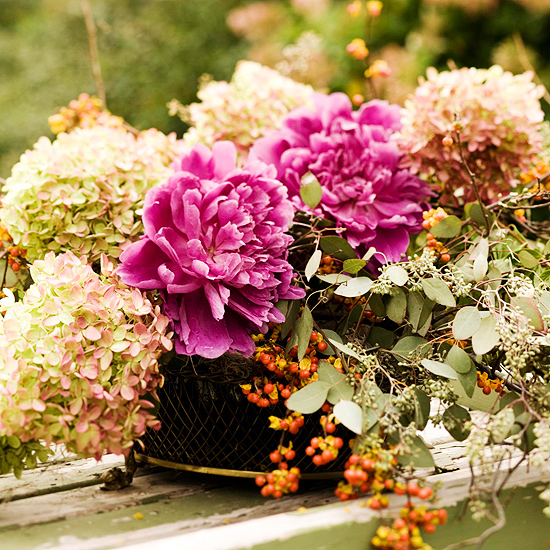
Remember that almost anything can serve as a floral container. If you have a cute but holey watering can, an old boot, or a special antique you'd like to use, place a smaller glass vase inside the decorative container to hold the flowers and water without damage.
It's also fun look to use one smaller glass container inside another, leaving just enough room between the two glass walls to fill with a playful element such as corn kernels, beans, pebbles, candies, seashells, or other material that fits your design theme.
As a general rule, make your bouquet about one and a half times taller than its container. Balance the width with the height.
Protect any surfaces, such as wood, that might be damaged by leaks; place a decorative saucer, pedestal, or other item below suspect containers.
Check out these creative containers.
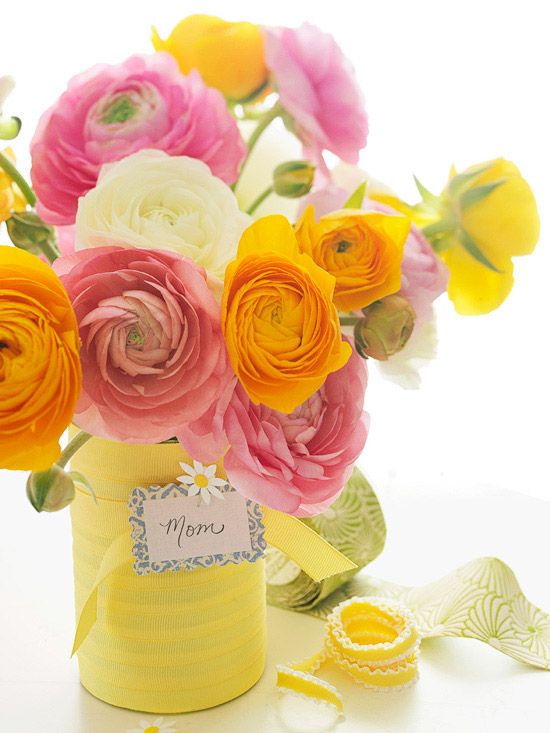
Whether you use flowers from your garden or from the florist, follow these tips for keeping flowers looking fresher longer.
Before you cut any flowers, prepare the containers and water. Start with clean, sterilized containers or vases. Use a bleach-and-water solution to ensure containers are clean.
Sterilize clippers and scissors with a 10:1 solution of water and bleach.
Dissolve a floral preservative in water, following directions on the packet.
Cut flowers in early morning or in the evening when the stems are fully hydrated. When cutting flowers from the garden, keep stems as long as possible; you can always cut them shorter but you can't make them longer!
Cut flowers when they are half open or in bud but showing color to provide a variety of flower textures and to extend the lifespan of your arrangement. Some flower buds, including roses, tulips, irises, and daffodils, will not open if you cut them when they're too immature.
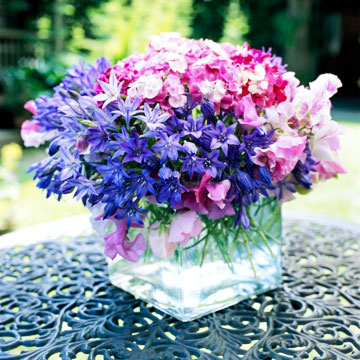
Cut flowers when they are half open or in bud but showing color to provide a variety of flower textures and to extend the lifespan of your arrangement. Some flower buds, including roses, tulips, irises, and daffodils, will not open if you cut them when they're too immature.
Pull the stamens off lilies so the colored pollen doesn't stain the flower or anything it brushes against; use your fingers. Removing the stamens also helps the flower last longer.
After the initial cutting, condition your flowers for at least an hour before arranging them. Recut stems underwater or immediately plunge them into water containing floral preservative.
Strip the leaves away from any stems that will be submerged in water. Leaves left under water will rot, releasing bacteria that cause flowers to deteriorate faster.
Place finished bouquets in a shaded, cool area for the longest life.
Host a spring flower-arranging party.
Copyright © www.100flowers.win Botanic Garden All Rights Reserved